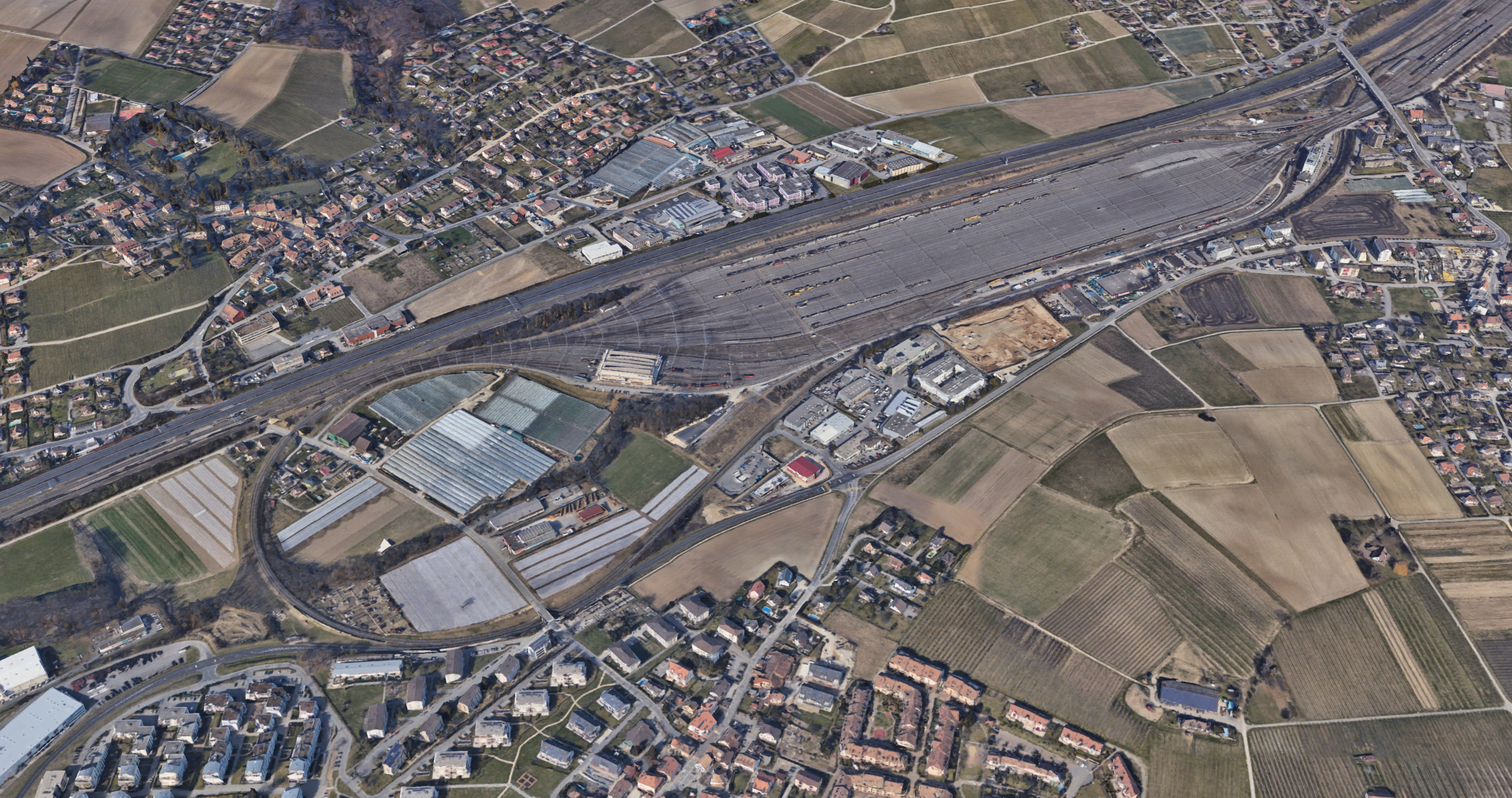G+P rises to the challenge of measuring noise from railway manoeuvres
The region is crossed by the busy Lausanne-Geneva train line and the N1 motorway. The activities and residential areas are densely populated. Therefore, there are numerous sources of noise. Measuring the noise from railway manoeuvres is very complex because it must be isolated from other noises. For this reason, measurements are made at night, when other noise is at its lowest.
Various measuring instruments in use
A total of seven measuring stations are needed for one month. Four microphones are set up at the railway station near the tracks and continuously measure the emitted noise for one month. These stations are battery independent and their results will be tracked on our web portal. Three more microphones will be placed at residents' homes for a few nights to measure the perceived noise. Five repetitions allow measurements to be taken from 15 people around the marshalling yard.

Extensive post-processing of the data
Our engineers use special software to isolate the shunting noise from other sounds. This work requires special experience. Each noise peak caused by shunting manoeuvres is identified via one or more microphones at the station. Their noise signature can be used to ensure that they are indeed shunting noise. These peaks are observed at the same time on microphones placed at residents' homes and isolated from the ambient noise. The sum of all peaks observed during the night gives the shunting noise level.
Measurement of braking noise at the entrance to the station
This picture shows the peak values of braking noise measured during one night from 10 pm to 6 am. At the height of the nearest residential buildings (red), noise peaks occur during the night on six out of seven nights that are about 30 decibels (dBA) above the background noise.

Measurement of the squeaking noise at the exit of the station
The turning loop allows trains formed in the marshalling yard to head back towards Lausanne. The tight curve causes shrill noises with the wheels of the wagons squealing against the curved tracks. These noise peaks are similar to braking noises, up to 40 decibels louder than the background noise for people living near this loop.

Effect of protective measures for noise reduction
Several measures have already been taken to limit this shunting noise: Noise protection walls around the braking area, modernisation of the braking system, restrictions on working hours, track lubrication to limit squeaking and noise protection windows. The measurements by Grolimund+Partner showed that these measures reduced the noise at night by about 3 to 5 decibels. A reduction of three decibels is clearly audible; it is equivalent to halving the noise source (half as many trains = three decibels noise reduction).

Possible actions envisaged by Grolimund+Partner
Despite the protective measures already taken, several residents still have their sleep disturbed due to the high average noise level at night and especially due to noise peaks that are significantly louder than the background noise. Continuous noise measurement would make it possible to detect malfunctions that cause unusually high noise and to correct them immediately. Other measures that can be considered included traffic speed within the loop, protection of the braking zone and reduction of activity during certain important sleep periods. The measures must be balanced against the interests of shunting activities.
/www.gundp.ch/file/1851/IMG_20210302_140107.jpg)
/www.gundp.ch/file/1859/Rangierbahnhof_Lausanne_Symbolbild.jpg)
/www.gundp.ch/file/1609/CPX_Quadratisch.jpg)
/www.gundp.ch/file/1625/CPX_Jaun_Quadratisch.jpg)
/www.gundp.ch/file/1636/PUN_Quadratisch.jpg)